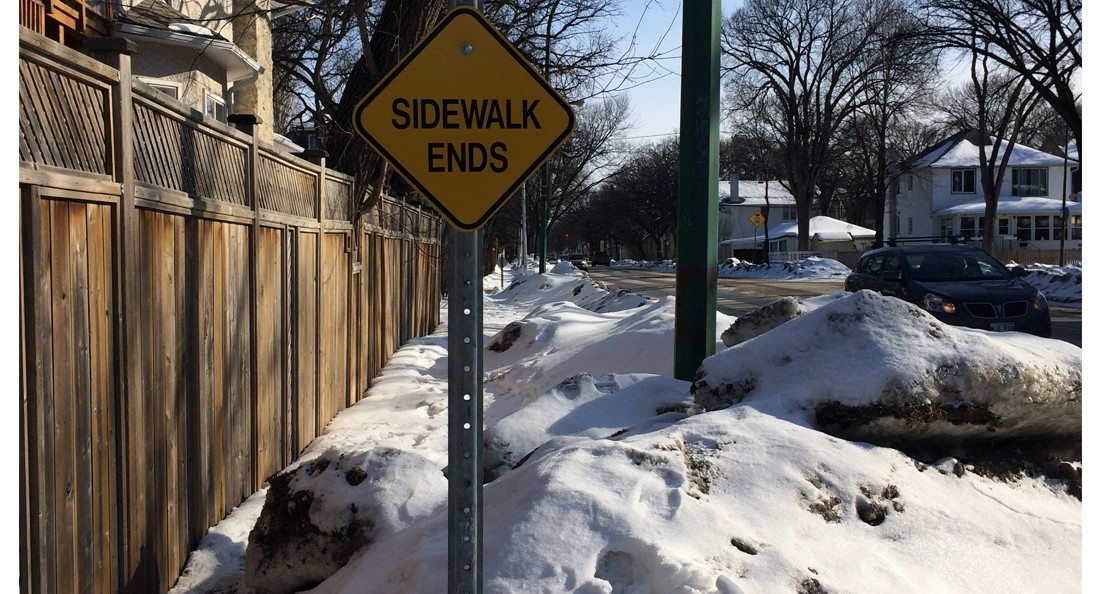On walk friendliness in Manitoba
And how to encourage walking the Winnipeg way
Walkability is a broad concept, with an ambiguous working definition along the lines of “how friendly a place is to walking.”
Elements considered necessary for a neighbourhood to be walkable include population density, land-use diversity, connectivity, pedestrian-friendly design and infrastructure, as well as access to public transit.
However, contributing characteristics are continually being analyzed. Theoretical complications exist when defining the concept, give that some elements of the pedestrian environment can be measured simply and objectively, while others are more subjective in nature.
Dozens of contributing factors exist in the collective stew of our independent (and shared) minds, and the measurable walkability of our cities may be more about the intersection of localities than defined science.
For example, I was recently in New York, where the climate does not seem entirely dissimilar to our own. Yet upon successfully communicating to my Airbnb host that -
40 °C is equal to - 40°F, she struggled to comprehend how we exist in such a climate. Their winter temperatures are nowhere near those of prairie winters.
I believe in walkability and its touted benefits – health, wealth, sustainability and vibrancy – but I am aware of the limitations of our surroundings. Winnipeggers justifiably perceive the wind chill not only to be a measure of walkability, but one of extreme importance.
Winnipeggers know that snow clearance (or lack thereof) of their nearby sidewalks surpasses an interesting and diverse mix of land uses when evaluating whether you’ll be able to comfortably walk to the bus stop.
People who use mobility devices – people with disabilities, elderly people and even parents pushing strollers – will also hold windrows (piles of snow left by plows), curb cuts (sidewalk ramps enabling smooth access to intersections), driveway crossovers (those intersecting public sidewalks) and construction detours to a higher consciousness than abled and younger people who can more easily traverse such unforeseen barriers. These are all important aspects of Winnipeg’s walkability.
However, when I decide to walk, I am choosing a method of interacting with Winnipeg, with New York, or with any city. The cityscape affects my experience, but my choice also affects the city. The desire to interact with our public spaces by walking can serve to increase awareness in our cities about how best to improve the local walking experience, and where.
Portage and Main is largely inaccessible to people with disabilities, an undeniable issue, but where do further issues lie? And why aren’t we screaming about those issues, too? Infrastructure? Maintenance? Public acceptance of walking as a valid mode of transportation worth investing in? (Here, I might refer you to the Portage and Main plebiscite map.)
Winnipeg is not a walkable city, but improving our level of walkability will be as much about building a culture that supports alternative modes of transportation, as about planning efforts.
If we know our city best, we should also be the most capable in seeing and interpreting potential. I would argue one way the walkability of our downtown increases in the winter months is when the warming huts burst onto the river. With their fluorescent or holographic radiance and their wind-breaking facets, we are allowed to see the Assiniboine as a feasible throughway.
If we can continue to learn new ways of accepting our winter, and being outside during some of our most inhospitable times, I have to believe Winnipeggers can still learn to see walkability as something worth investing in, our way.
Brittany Curtis is a server, research assistant, double board member, occasional DJ and sometimes writer. She is also a passionate and highly capable 2018 graduate of the University of Manitoba’s city planning program, brimming with potential and looking for a job.
Published in Volume 73, Number 13 of The Uniter (January 10, 2019)







